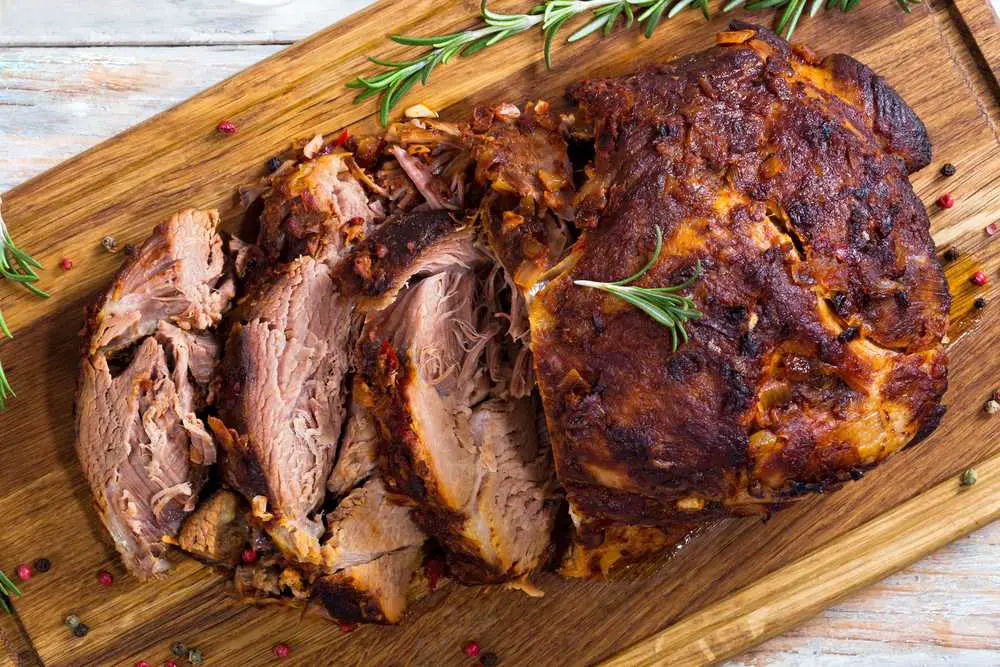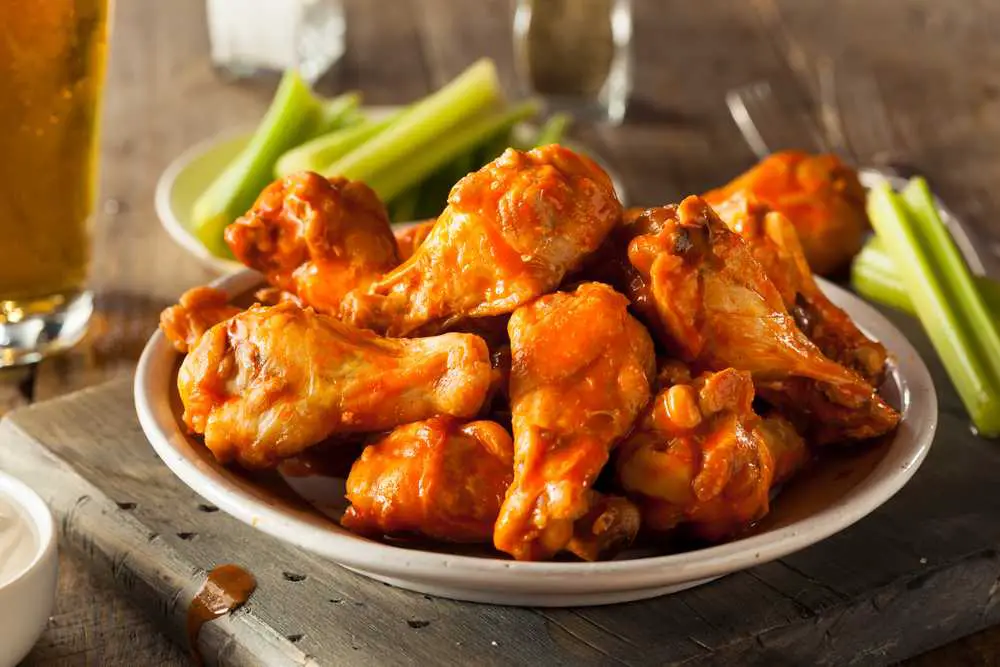Pork rib roast, particularly when boneless, is a succulent and versatile cut of meat that provides an elegant centerpiece for a variety of occasions. In this recipe, we will explore how to prepare a mouthwatering boneless pork rib roast that’s sure to impress your guests with its tender texture and rich flavor.
Ingredients:
1 boneless pork rib roast (about 3 to 4 pounds)
2 tablespoons olive oil
2 teaspoons salt
1 teaspoon freshly ground black pepper
1 teaspoon garlic powder
1 teaspoon onion powder
1 teaspoon dried thyme
1 teaspoon dried rosemary
1/2 teaspoon paprika
1/4 teaspoon cayenne pepper (optional for heat)
1/2 cup chicken broth or dry white wine
Instructions:
Preparing the Roast:
Preheat Oven: Start by preheating your oven to 350°F (175°C). This temperature ensures a gentle cooking process, keeping the pork moist and tender.
Season the Roast: In a small bowl, mix together salt, black pepper, garlic powder, onion powder, thyme, rosemary, paprika, and cayenne pepper. Rub this mixture all over the pork roast, ensuring it’s evenly coated. This blend of herbs and spices will give the roast a flavorful crust.
Sear the Roast: Heat olive oil in a large skillet over medium-high heat. Once hot, sear the pork roast on all sides until golden brown. This step is crucial for locking in flavors and juices.
Roasting:
Transfer to Oven: Place the seared roast in a roasting pan. Pour chicken broth or wine into the bottom of the pan. The liquid will help to keep the roast moist and also adds flavor to the pan drippings, which can be used for a sauce.
Roast: Roast in the preheated oven for about 1 hour to 1 hour and 15 minutes. The ideal internal temperature for pork roast is 145°F (63°C) when checked with a meat thermometer.
This temperature ensures the pork is cooked through but still juicy.
Rest the Roast: Remove the roast from the oven and let it rest for at least 10-15 minutes before slicing. Resting allows the juices to redistribute throughout the meat, making it more tender and flavorful.
Serving:
Slice and Serve: Slice the roast into desired thickness. Serve with the pan juices drizzled over the top for added flavor.
Optional Side Dishes: This roast pairs beautifully with roasted vegetables, mashed potatoes, or a simple green salad. You can also consider serving it with apple sauce or a fruit chutney to complement the savory flavors of the meat.
A boneless pork rib roast is a fantastic option for a hearty family meal or a special occasion. This recipe, with its simple yet effective blend of spices and careful roasting technique, ensures a flavorful and tender roast that is both easy to make and satisfying to eat. Enjoy the process and the delicious results!
Additional Tips and Variations:
While the basic recipe for a boneless pork rib roast will yield delicious results, there are a few tips and variations you can consider to personalize the dish to your taste:
Tips:
Marinating: For an even more flavorful roast, consider marinating the pork for a few hours or overnight. Use a combination of olive oil, lemon juice, garlic, and herbs for a tasty marinade.
Creating a Crust: For a more pronounced crust, you can add a bit more texture to your spice rub by including breadcrumbs or finely grated Parmesan cheese.
Vegetables in the Roasting Pan: Add carrots, onions, and potatoes to the roasting pan around the pork. They will cook in the juices of the roast, absorbing all the delicious flavors.
Glazing: In the last 20 minutes of roasting, you can brush the pork with a glaze of your choice.
A mixture of honey, Dijon mustard, and a bit of apple cider vinegar makes for a great glaze.
Checking for Doneness: Remember that pork will continue to cook slightly after it’s removed from the oven. Remove it when the thermometer reads a few degrees lower than your target temperature.
Variations:
Herb Variations: Feel free to experiment with different herbs and spices. Sage, oregano, or marjoram also work well with pork.
Spicy Kick: If you enjoy a bit of heat, increase the amount of cayenne pepper or add chopped fresh chilies to the rub.
Fruity Twists: Adding slices of apple or pear to the roasting pan can impart a subtle, sweet flavor that complements the savory pork.
Stuffing: For an extra special touch, you can butterfly the roast and stuff it with a filling of your choice, like a mixture of breadcrumbs, herbs, and sautéed mushrooms.
Wine Pairing: A nice glass of red or white wine can complement this dish beautifully. A full-bodied Chardonnay or a light Pinot Noir pairs well with the flavors of the pork.
Enjoy Your Meal:
With these tips and variations, you can easily adapt this boneless pork rib roast recipe to fit any occasion or personal preference. The beauty of this dish lies in its simplicity and the versatility of flavors you can pair it with. Whether it’s a festive dinner, a Sunday family meal, or a special occasion, this pork rib roast is sure to be a crowd-pleaser. Enjoy the cooking process and the delightful meal that follows!
FAQ: Boneless Pork Rib Roast
How long should I cook a boneless pork rib roast?
The general rule is to cook pork roast in a 350°F (175°C) oven for about 20-25 minutes per pound. However, the best way to ensure it’s done is by using a meat thermometer. The roast is ready when it reaches an internal temperature of 145°F (63°C).
Can I cook the roast in a slow cooker?
Absolutely! Cooking the pork rib roast in a slow cooker can result in a very tender dish. Cook it on low for 6-8 hours or on high for 4-5 hours. Since slow cookers vary, adjust the time based on your specific model.
How can I keep my pork roast from drying out?
To prevent drying out, avoid overcooking the pork. Remove it from the oven when it reaches 145°F (63°C) and let it rest before slicing. Also, searing the meat before roasting and adding broth or wine to the pan helps retain moisture.
What’s the difference between a pork loin roast and a pork rib roast?
Pork loin roast is from the back of the pig, and it’s typically leaner and larger than a rib roast. The rib roast, which comes from the rib area, has more fat and flavor. Both are delicious, but they have different textures and cooking times.
Can I make this recipe ahead of time?
You can season the roast or even sear it in advance, but it’s best roasted just before serving for the freshest taste. However, leftovers can be stored and reheated, though the texture might change slightly.
What should I do with leftovers?
Leftover pork roast can be sliced for sandwiches, chopped into stir-fries, or added to soups or salads. It’s versatile and retains flavor well.
Are there any specific tools I need for this recipe?
A good meat thermometer is essential for cooking meat to the perfect doneness. Additionally, a sturdy roasting pan and a sharp carving knife will make the process easier.
How should I slice the roast for serving?
Slice the roast against the grain into your desired thickness. Slicing against the grain ensures that each piece is tender.
Can I make a gravy with the pan drippings?
Yes, the pan drippings can be used to make a delicious gravy. Skim off excess fat, and then simmer the drippings with a bit of flour, broth, and seasoning until thickened.
What sides go well with a pork rib roast?
Roasted or mashed potatoes, steamed or roasted vegetables, a fresh salad, or dinner rolls complement the roast well. For a lighter option, consider a quinoa or rice pilaf.
By keeping these FAQs in mind, you can expertly prepare and serve a boneless pork rib roast, making your meal both delicious and memorable.


















